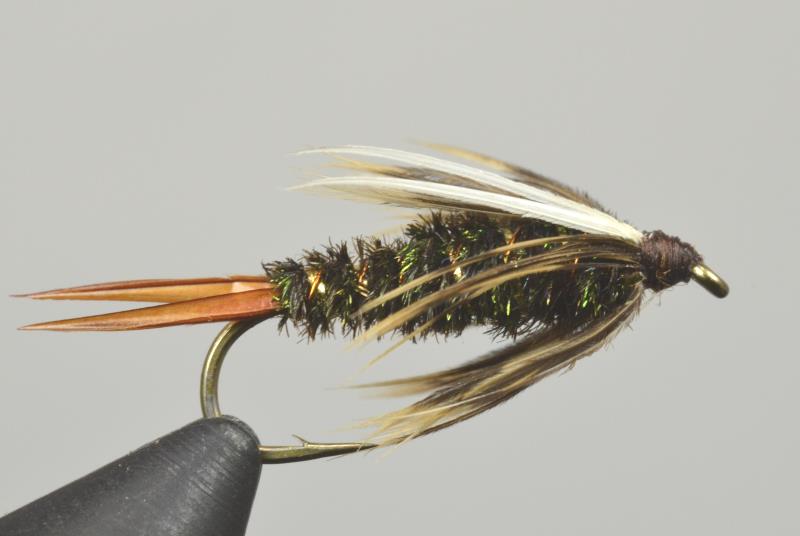Prince Nymph
Douge Prince – Skip Morris – Steve Mathewson
Translated by Carl WuebbenThis fly is not named for the flamboyant musician of “purple rain” fame rather the fly is named after its creator Doug Prince of Monterey, California, developed it in the late 1930’s or early 1940’s. His original Prince nymph had a black body, black soft hackle, and a black tail. A modification of his pattern, which he called the “Brown Forked Tail,” became the well-known Prince Nymph. It works in all seasons and in all kinds of water conditions. Doug Prince designed this as a stonefly imitation for fast water. Try adding a gold bead also to get down faster. The pattern is the same except the gold bead.
PATTERN
HOOK – Standard nymph in sizes #10 - #16
WEIGHT – 8 to 15 turns of non-lead or lead wire the diameter of the hook shank
THREAD – Black 8/0 (70 denier) or 6/0 (140 denier)
TAILS – Brown turkey biots or goose biots
RIB – Fine oval gold tinsel or silver
BODY – Peacock herl
HACKLE – Brown hen-neck (one and a half the hook gap size)
WINGS – White goose biots
FILLER – any type of dubbing and any color, it will not be seen.
TIP – Biots are brittle so try using a damp paper towel to slightly moisten them and this will make them easier to work with. Don’t soak them, just a little moisture.
HOW TO TIE
TIE UP A DOZEN OR TWO – AND GO FISHING*** But remember to practice C.P.R. (CATCH – PICTURE – RELEASE)


